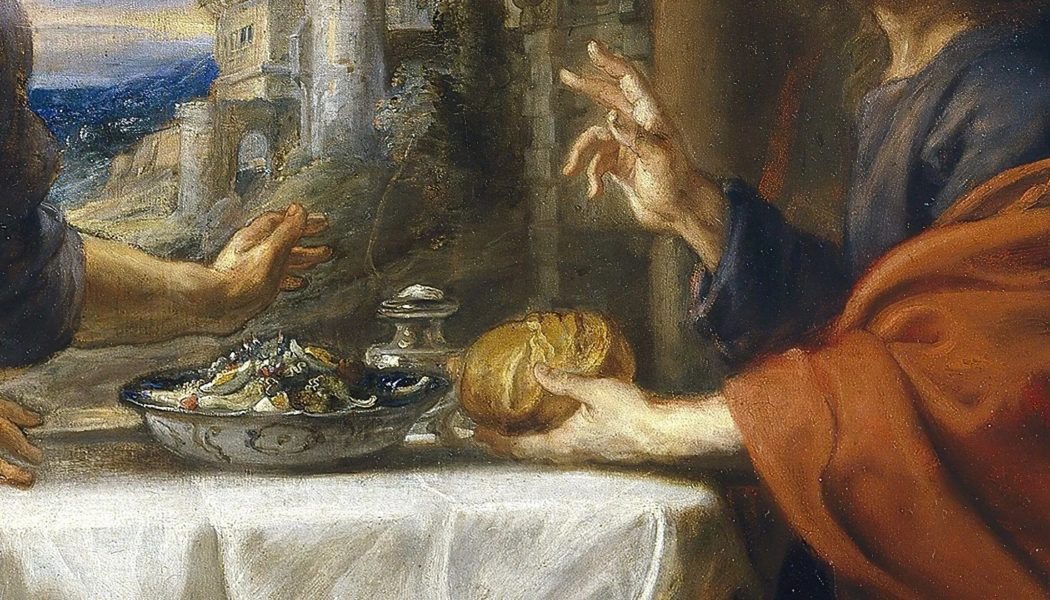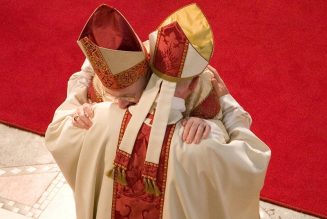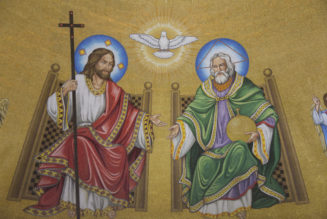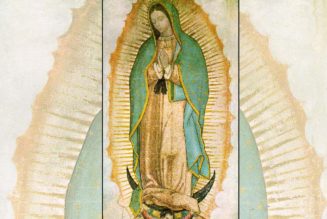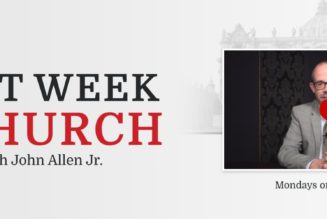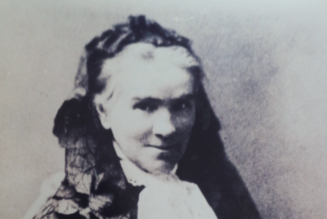
The Gospel reading for the Third Sunday of Easter, Year A, tells the story of Jesus meeting two disciples as they head out of Jerusalem on the road to Emmaus, and shows us the ways Jesus meets people today.
First, Jesus meets each of us, superstar or not.
“Two of Jesus’ disciples were going to a village seven miles from Jerusalem called Emmaus,” the story begins.
In many of the Resurrection encounters, Jesus is meeting the main characters of the Gospels, the superstars of salvation history: Mary Magdalene, St. Peter, St. Thomas and St. Paul. Here, it’s just two random guys — two disciples; only one of them named. No one knows their full history. Good. They represent each of us and the story reminds us that Jesus doesn’t just come to the important people. He comes to us, too.
Second, Jesus meets us anywhere and everywhere.
We know little about the two disciples; we know even less about Emmaus — and that’s a good thing too. Since this is not a story that takes place on a roadway a Holy-Land guide can point out, it is all the easier to see this as a story of Jesus’s appearance on any and every road. Jesus meets us when we are pursuing our lives, and not just when we stop to talk to him and consciously seek him out.
Third, Jesus meets us in our doubts.
“While they were conversing and debating, Jesus himself drew near and walked with them,” the Gospel says.
Often, we fall into the trap of thinking we have to somehow work our minds up into the perfect state of contemplation or study to be able to meet Jesus. Not so. He comes in answer to the hard questions we ask about what we see in the world, in the Church and in our lives. Yes, he often does come in answer to faithful prayer. But in our lives as in this Gospel, sometimes he also comes in answer to our faithlessness, thank God.
Fourth, Jesus wants to talk to us when our guard is down.
“Their eyes were prevented from recognizing him,” says the Gospel, as Jesus asks what they are talking about.
A number of reasons have been given for why the disciples do not recognize Jesus: Maybe it was something about his resurrected body or their dismissive dispositions. But I think he doesn’t show himself because people get distracted when he does: We get filled with religious emotion, or focused on side issues. He wants us to be honest with him. The Emmaus reading gives us permission to imagine ourselves just walking along with Jesus, chatting straight-forwardly about our real emotions. Try it – and be prepared to hear Jesus point out what’s really wrong in your life. He often does.
Fifth, Jesus also wants us to get used to seeing him in everyone we meet.
Here’s another reason he hides himself from their eyes: Jesus wants to train us to see him in everyone. In fact, he will judge us on our ability to serve everyone as if each were him. St. Martin of Tours found this out when he split his cloak for a beggar who later appeared to him as Christ, and when Mother Teresa saw a reluctant volunteer suddenly became much more enthusiastic and loving when dealing with a dying man covered with sores, she knew why. “You saw him, didn’t you?” she asked. He had.
Sixth, Jesus meets us in Scripture.
Next, “He interpreted to them what referred to him in all the Scriptures,” says the Gospel.
Jesus is continually doing that. He has a lot of helpers nowadays, too: Ascension Media and Father Mike Schmitz’ Bible In a Year and Catechism in a Year podcasts, Bishop Robert Barron’s videos and Word on Fire Bible volumes, the Augustine Institute, the St. Paul Bible Center, Media & Culture at Benedictine College, and more. “Ignorance of Scripture is Ignorance of Christ,” said St. Jerome. And the corollary is true, too: knowledge of Scripture will leave your heart “burning within you” for Christ, as it did the two disciples on their way to Emmaus.
Seventh, Jesus “stays with us” even now, in the Eucharist.
“Stay with us,” the disciples say as they reach their destination. He did, and “While he was with them at table, he took bread, said the blessing, broke it, and gave it to them. With that their eyes were opened and they recognized him, but he vanished from their sight.”
We are living that final Emmaus moment in our own lives to this day.
Jesus has shown us who he is and has led us to the altar where he will appear in the Blessed Sacrament. The Emmaus story happens at every Mass, with Jesus meeting us on the pathway of our lives, spending time unfolding the Scriptures to us, then uniting with us in the bread that becomes his body, blood, soul and divinity.
And it has to be said: While it is certainly true that he will meet us on the roads we travel, and in the people we meet, and that he wants to chat and have a personal relationship with us — he wants most of all to meet us at the altar, in the tabernacle or in the monstrance. And in the confessional too. We will always find him there, in the Church he left us, drawing near and saying, “Yes, I will stay with you. Will you stay with me?”
Image: Peter Paul Rubens, The Supper at Emmaus,
Artefact / Alamy Stock Photo
